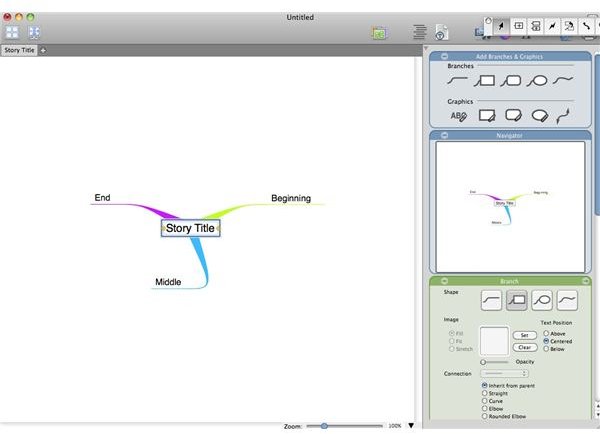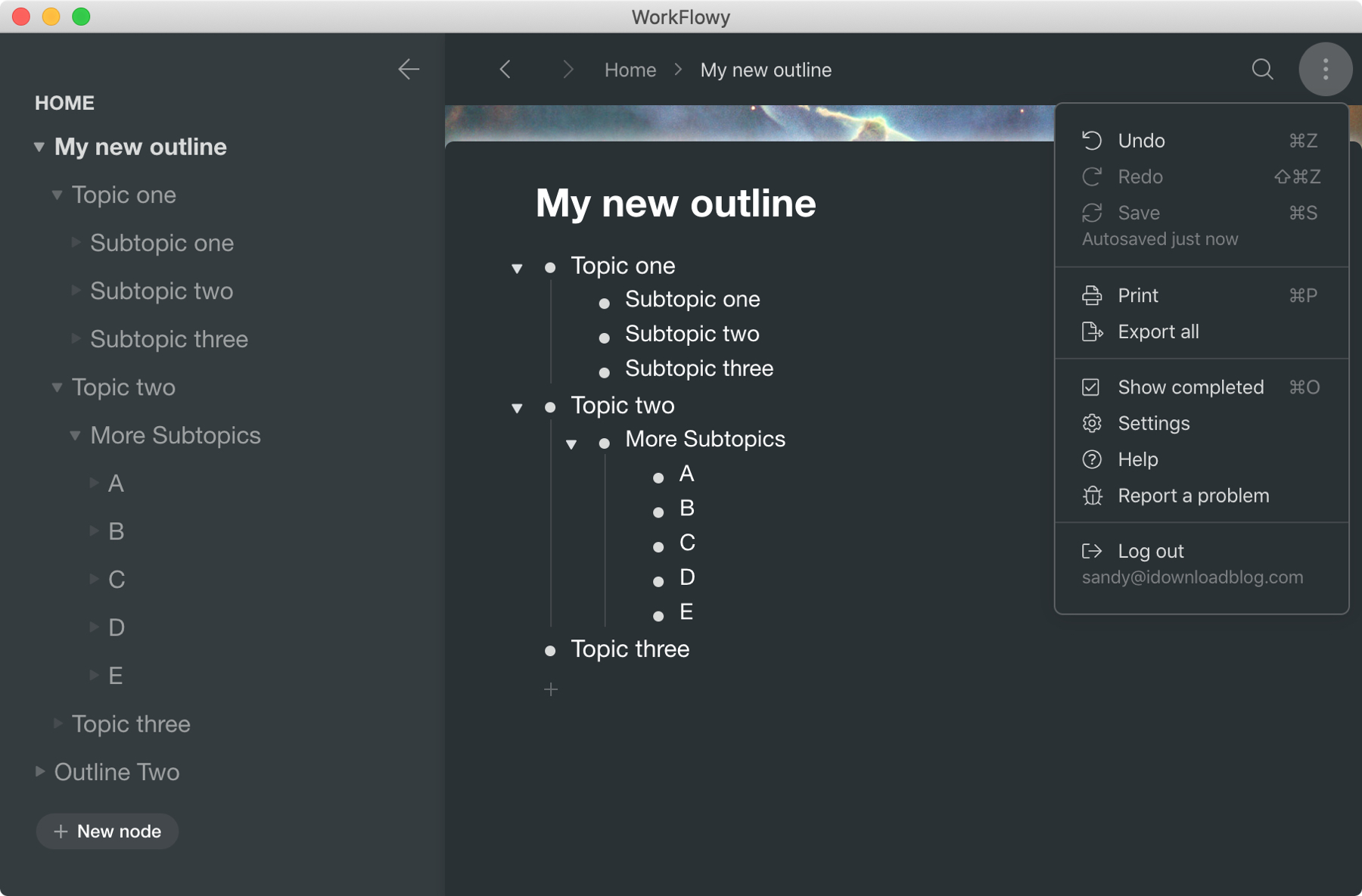
#Mac outliner mac
There are versions of OmniOutliner for both Mac and iPad, and rather than struggle with implementing iCloud syncing across platforms, OmniGroup created their own synchronization app, OmniPresence. OmniOutliner 4 takes a cue from the company’s OmniFocus task manager, and renames Hoist to Focus. In previous versions, the Hoist command allowed you to display only the current topic and its subtopics, hiding the rest of the outline so you can work on the current topic without distraction. When you need another dimension to work with your information, OmniOutliner’s columns fill the bill.Īlong with the user interface changes come changes to familiar terminology.

You can now also add the styles from a template-its theme-to your own outlines. Of course, you can save your own outlines as templates. The program also automatically populates pop-up lists to make data entry faster, and parses date entries such as “next Wednesday,” “tomorrow,” and “+5d (for 5 days ahead).” A new favorite feature is the ability to zoom the outline to view it larger or smaller.Ĭreating outlines is faster with the addition of the Resource Browser, which contains more than a dozen premade templates to help you get started. OmniOutliner has always been unusual in that it supported not just outline rows, but also columns, and you can now hide columns you don’t need to see. The Inspector, where you make style changes and specify how the outline displays, has been overhauled and reorganized, to good effect. The previous version’s drawer, which held a miniature view of your whole outline, along with a pane for row styles, has been changed to a sidebar that can be hidden. The biggest change in OmniOutliner is the refreshed user interface that’s cleaner and easier to use. Unicode (UTF-8) is the default and the standard.ĥ.The Omni Group says that Mavericks is required because the user interface upgrades they implemented in OmniOutliner didn’t work well in Mountain Lion. From the Text-Encoding drop-down list, select the encoding type. I keep it as CSV, which is the standard option recognized by most spreadsheet programs.Ĥ. In the Format drop down menu choose the desired format. Enter File name in Save As and where you want it to be saved.ģ.

If you want to export the Outliner into a spreadsheet program like Excel (this is for both Mac and Window users). Make sure you have the right settings and printer. Select from the Binder the files or container (folder) for which you want to print the outline.ĩ. Click OK to close the Page Setup window.ħ. After you’ve made your selections.Click OK to close the the Print Options window.Ħ. Check off all the options that you want to include in the print out.ĥ. Another window will open with a menu of what can be printed. A new window will open with margin settings click on Options.Ĥ. Go to Settings and click on the arrows, select Scrivener.ģ. If you want to add color to your rows, simply go View->Use Label (or POV or whatever you renamed it) Color in Outliner Rows.įinally if you want to print the Outliner, follow these steps:Ģ. Or let Scrivener do the work and just double-click the bar to the right of the column title. A double arrow will appear click and drag to size. Is the Outliner as flexible as the Corkboard? Definitely! You can move columns and rows around by selecting the cell and dropping it wherever you like, and manually make them narrower or wider by placing your cursor on the divider line. I’m keeping “Status” as is, but you’’ll notice that I can add my own statuses whether the chapter/scene needs fine-tuning, which revision I’m on, whether I need to research more etc. I’ll change it to POV and that’s now shown in the General section of the Inspector.

Because I like to make my work as visual and colorful as possible, I’ve color-coded my MC’s point-of-view but I’ve kept the generic title of label. Let’s play around with Label and Status first.

A box will open and you’ll see it has Project Properties, Label (which relates to the General Information seen in the Inspector and Custom Meta-Data. Go to the menubar, select Project->Meta-Data Settings. So let’s customize the outliner by adding the meta-data. I’ve played with the beta and I didn’t come across any bugs).
#Mac outliner windows
(The new Windows beta version now has the meta-data feature, but the current official version doesn’t. But here’s the cool part of the Outliner you can configure your meta-data settings to include other column options like location, date, point-of-view and goal, motivation, and conflict. You’ll note that some of these columns might be helpful and others not so much. They range from the Title of chapter or scene to Total Progress. Take a look at the column options offered.


 0 kommentar(er)
0 kommentar(er)
